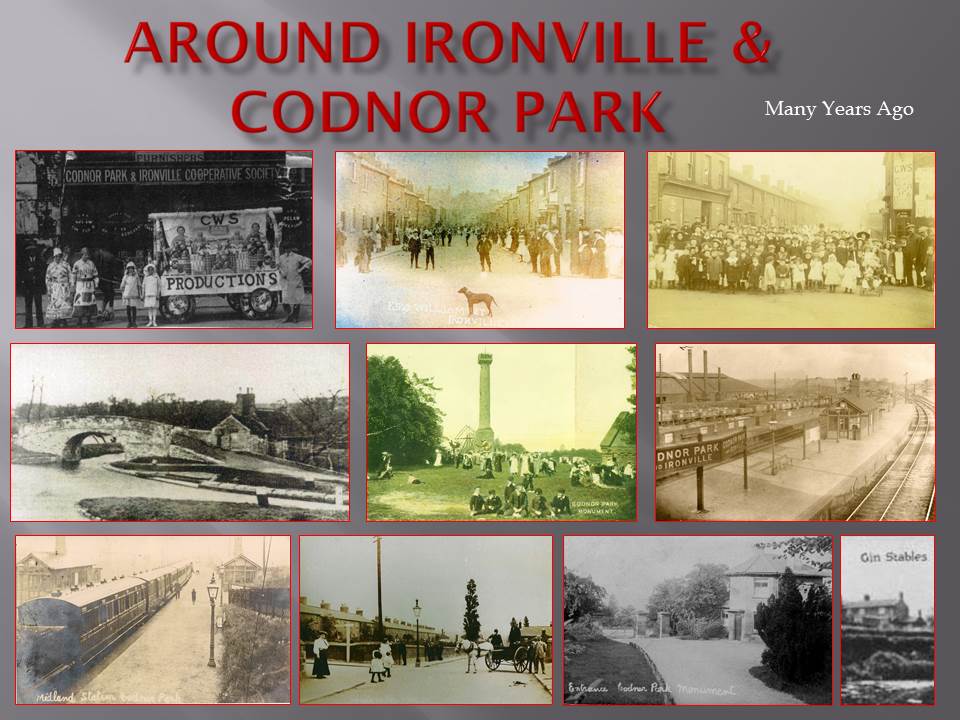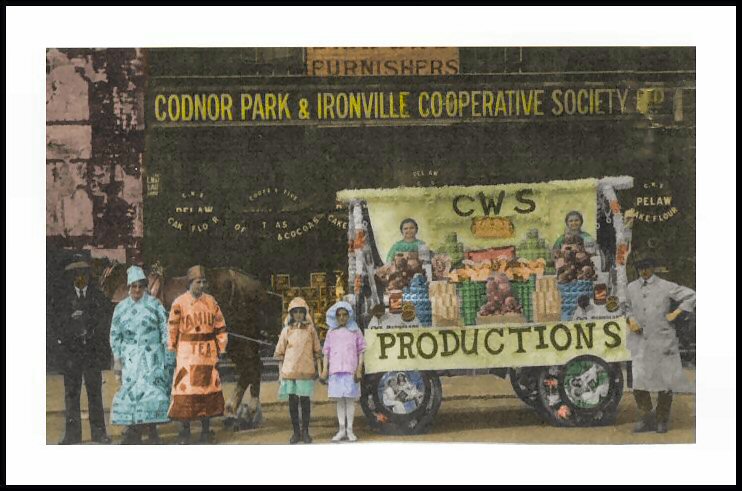
Lawn Bridge
historical notes
Lawn
Bridge, more commonly called the ‘Old Iron Bridge’ is a Bridle Way crossing
point over the remains of the Cromford Canal.
The original bridge across the River Erewash was a gateway into the deer
park of Codnor Castle and was of unknown antiquity.
When the canal was constructed in 1794, the bridle way had to be
maintained and the first bridge built of stone followed.
The name is
derived from the fields called ‘The Lawn’ in the Codnor Park estate that flank
the river Erewash at this point.
The first
map we have found showing the Lawn Bridge is dated 1801 and is one of the
earliest maps showing the canal after it had actually been constructed.
Another map dated May 25th 1808 and drawn by William Jessop
junior also shows the Lawn Bridge and confirms it as a bridle way.
His map shows the area in some detail, including the very first bridle
bridge location over the River Erewash.
This was replaced by a bridle carriage way (still horse drawn of course)
and new bridge, the remains of which are still visible.
This bridge carried the first railway/tramway over the river and then
over Lawn Bridge.
In
1822/1823 the Butterley Company constructed an aqueduct and basin on the
Jacksdale side of the river Erewash and Cromford Canal with yet another bridle
bridge that we still see today.
In 1845 the
Midland Railway removed the original Lawn Bridge and replaced it with another
(type unknown), built a raised slag block embankment and re-directed the railway
over a new tramway bridge, the remains of which can still be seen today.
The right
of way was un-affected at this point in time as all the traffic was horse drawn
and it was felt it represented no danger to anyone.
However, in 1871 the right of way was re-routed because the Butterley
Company had introduced locomotive engines to work the railway and that this
represented a danger to the public.
By 1902 the
Lawn Bridge and the tramway bridge had been removed completely and this remained
the case until 1943 when the Butterley Company built the ‘Bailey Style Bridge’
while competing for a Government contract to replace all the bridges that would
be required in the re-conquest of Europe in the Second World War.
This bridge
was again ‘adopted’ as a right of way through the Codnor Park Ironworks until
its controversial removal for ‘safety’ reasons during the open cast excavations
that took place early this century.
When the
bridges were removed in 1902 a new bridle route was established along the canal
haling path and across a concrete bridge next to lock six and the dry dock.
Today it
remains the only canal crossing point between Ironville and the old black bridge
over a mile away down water of the canal.
This crossing point is old, dangerous (its condition is completely
unknown) in-adequate, poorly sited and un-wanted.
The
over-whelming case for re-instating Lawn Bridge would bring great material
benefit to the local economy and provide a cohesive communication point between
the communities of Codnor Park and Jacksdale.
This would allow local people and the many visitors and walkers to the
Jacksdale area to access the wonderful walks and open spaces Codnor Park has to
offer. Equally, Codnor Park
residents would be able to access the many retail outlets Jacksdale has to
offer, not least the Dentist Surgery, the Doctor’s Surgery, the Co-op and other
shops. They would also be able
to easily access the Bus routes that pass through Jacksdale to Ripley, Alfreton,
Mansfield and Nottingham, something they cannot currently do.
Lawn
Bridge, more commonly called the ‘Old Iron Bridge’ is a Bridle Way crossing
point over the remains of the Cromford Canal.
The original bridge across the River Erewash was a gateway into the deer
park of Codnor Castle and was of unknown antiquity.
When the canal was constructed in 1794, the bridle way had to be
maintained and the first bridge built of stone followed. Since that time and for
various reasons (see historical notes for details) there have been a further two
bridges, but now we have no bridge at all.
We strongly
urge all like-minded people to support our petition and ask all local
politicians to get behind our cause and make the case for a project that would
bring great benefit in many ways to our locality, economy and the people who
live here.
Codnor Park Iron Works
Extract from The
Ilkeston Leader, and Erewash Valley Advertiser October 19th 1861
CODNOR PARK – Massive Iron
works – The Butterley Company have just completed some extensive Iron Works at
their forge, Codnor Park, consisting of eight wrought iron plates, of which the
finished dimensions are 25ft 3in long by 7ft wide in the middle, and 2¼” thick
full, the gross dimensions are 28ft long, by 7ft 4in wide and 2¼” thick. The
weight is about five tons each. These plates are made for Messrs McNapier and
Co., of Glasgow, ship builders and engineers, who constructed the Black Prince
for the Government. Some idea of the magnitude of the plates may be formed from
the fact that the largest armour plates made for any English vessel may not
exceed four feet in width. Those just completed were beam plates, and the whole
of the operations requisite for their production were conducted very
successfully. The Butterley Company have received specifications for a set of
armour plates, and in contemplation of these and other works the company are
about another extensive rolling mill with four engines of the same power, with
24 puddling furnaces. By these means the company will be able to roll very large
beams instead of welding them. Two years ago a double headed rail, probably the
longest in the world, the length being no less than 86feet, was produced at
these works. In the present forge there has been cast the rim of a flywheel
24ft. in diameter, weighing about 21 tons and others weighing from 26 to 30 tons
are about to be cast. The company consume from 500 to 600 tons of coal per week.
|
Ironville
& Codnor Park Circa 1891 |
|
|
Ironville
From a
Derbyshire Directory circa 1891 IRONVIILLE is a populous
township, in the parish of Alfreton. Ironville
is half a mile north from Codnor Park stations
on the Erewash section of the Midland and Great
Northern railways, and 3 ½ miles south-east from
Alfreton, in the Mid division of the county,
Scarsdale hundred, Belper union, Alfreton petty
sessional division and county court district,
and 1850
was formed into an ecclesiastical parish
from the civil parishes of Alfreton, Pentrich ,
Heanor and Codnor, in this county, and Selston,
in Nottinghamshire, Codnor Park, though a
separate township, being within the
ecclesiastical parish, rural deanery of Alfreton,
archdeaconry of Derby and diocese of Southwell.
The township is close to the Cromford canal, and
the Pinxton canal commences here. The place is
lighted with gas and supplied with water by the
Butterley Company. Christ Church, erected in
1852 by the Butterley Company, is an edifice of
stone, consisting of chancel, nave, transepts,
south porch and an embattled western tower
containing a clock and one bell : in the chancel
are three memorial windows to William Jessop esq.
and in the baptistery, a memorial window and
tablet, erected in 1873 by the parishioners, to
Francis Wright esq. ; in the south transept is a
stained window placed in 1871 by the Rev. W. E.
Littlewood M.A. then vicar: and in the north
transept a memorial tablet, to the Rev. John
Casson, first vicar of this parish : in 1885 the
choir was completely renovated and new stalls
erected: there are 600 sittings. The register
dates from the year 1850. The living is a
vicarage, gross yearly value £250 with
residence, in the gift of five trustees, and
held since 1887 by the Rev. Rowland Paul Hills
M.A .LL. D. of Queens' College, Cambridge. There
is a Free Methodist Chapel here, built, in 1874
and seating about 300; and a Primitive Methodist
chapel, built in 1883-4, and seating 300. The
cemetery consists of about 3 acres. Most of the
inhabitants are employed in the steel and iron
works and at the smelting furnaces, immense
quantities of iron being wrought in this
neighbourhood; there are also collieries. A
weekly market
is held on Saturday. In the neighbourhood
is an extensive park, the property of the
Butterley Co. used by the inhabitants of this
district as a recreation ground, and in the
centre is a monumental pillar erected in 1854 by
the workmen and friends of the Butterley Co. to
William Jessop esq.,the founder of the works.
The Butterley Co. and the Midland and Great
Northern Railway Cos. are the chief landowners.
The soil is clayey; subsoil, chiefly marl and
clay. The area is 1407 acres; rateable value
included with Alfreton; the population in 1881
was 2802. |
Codnor Park
From a Derbyshire Directory
Circa 1891 CODNOR PARK, formerly
extra-parochial, now forms part of the
ecclesiastical parish of Ironville (a brook
which runs under the principal street, about
half-way up, dividing the township) ; it is on
the Erewash valley railway and the Erewash and
Cromford canals, and is 132 miles from London by
rail, 4 south-east from Alfreton, 3 east from
Ripley, and 8 north-east from Belper, in the
Ilkeston division of the county, hundred of
Morleston and Litchurch, Basford union, Smalley
petty sessional division, Alfreton county court
district, rural deanery of Alfreton,
archdeaconry of Derby and diocese of Southwell.
The canals form a junction here, and the
railway, with a station at this point, is in
direct communication with the works and
collieries in the neighbourhood. Codnor Castle,
formerly standing in a park, covering an area of
1500 acres, appears to have been a large
fortress, and a part of the walls and
foundations still remain: it belonged to the
Lords Grey of Codnor, and after passing through
several hands, was bought, in 1712, by Sir S.
Masters, and is now the property of the
Butterley Company Limited, who have laid out 7
acres as a park and recreation ground ; in the
centre of which, on the top of a bill, is a
monumental pillar of stone, 70 feet high,
erected in 1854 by the workmen and friends of
the Butterley Company in the memory of William
Jessop esq. the founder of the works ; 150
winding steps within the column lead to a
gallery at the top, from which very extensive
views can be obtained ; some years ago it was
struck by lighting and traces of the occurrence
are visible down the whole of one side The
Butterley Co. Limited have very extensive
ironworks here for the smelting and manufacture
of steel and all descriptions of iron, several
blast-furnaces being constantly at work; the
company are also proprietors of several
collieries in this county and in Nottinghamshire
and Staffordshire;
iron-stone, coal and other minerals
abound. A Temperance hall, Institute and baths,
were erected by the company in 1866; the former
building is now occupied by the Conservative
Club. The greater portion of the population are
employed in the ironworks and collieries.
Aldercar Hall, the property of F. B.
Wright esq. is the residence of Francis Hugh
Adams esq. M.A. The chief landowners are the
Butterley Company Limited, the Venerable
Archdeacon Woolley, of East Bergholt, Suffolk
and F. C. Corfield esq. M.A., J.P. of Codnor.
The soil is clayey; subsoil, marl and clay. The
crops are wheat and oats, but the land is
chiefly in pasture. The acreage is 1401;
rateable value, £9967; the -population in 1881
was 1073. Golden Valley is partly in
this township and partly in Riddings district.
There is a school church-here, served by the
clergy of Ironville. |


Where did the residents of Codnor Park go to get married pre-Civil Registration